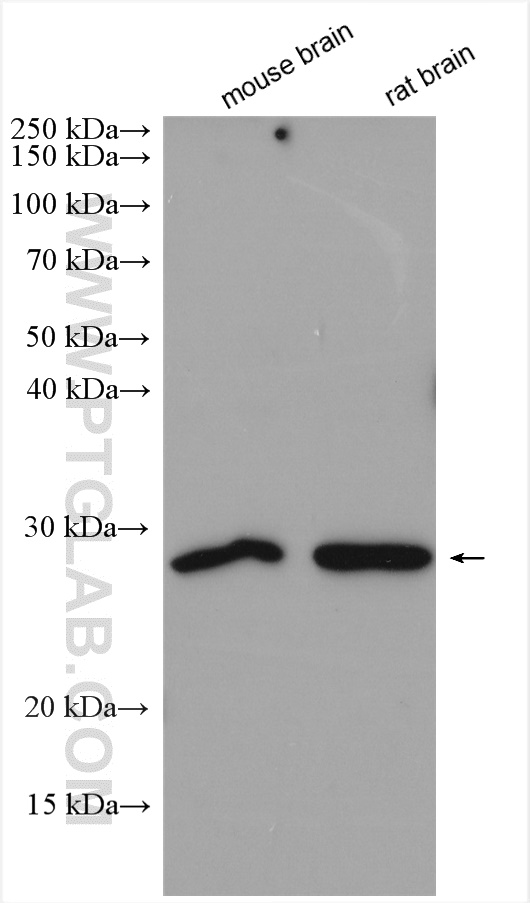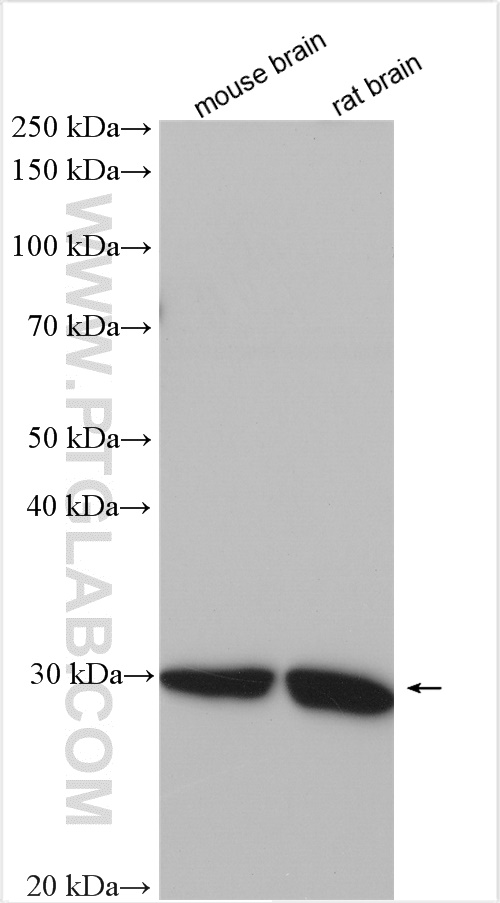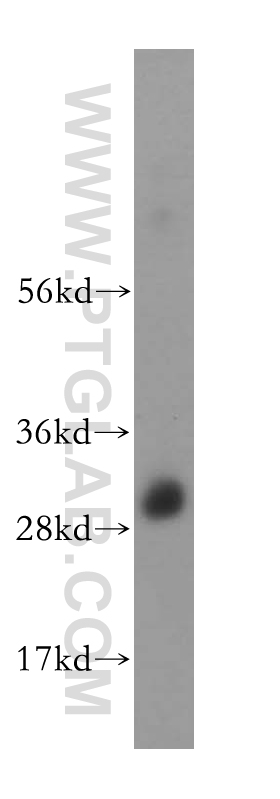验证数据展示
经过测试的应用
| Positive WB detected in | mouse brain tissue, human brain tissue, rat brain tissue |
推荐稀释比
| 应用 | 推荐稀释比 |
|---|---|
| Western Blot (WB) | WB : 1:1000-1:6000 |
| It is recommended that this reagent should be titrated in each testing system to obtain optimal results. | |
| Sample-dependent, Check data in validation data gallery. | |
发表文章中的应用
| KD/KO | See 1 publications below |
| WB | See 7 publications below |
产品信息
14082-1-AP targets OVOL1 in WB, ELISA applications and shows reactivity with human, mouse, rat samples.
| 经测试应用 | WB, ELISA Application Description |
| 文献引用应用 | WB |
| 经测试反应性 | human, mouse, rat |
| 文献引用反应性 | human, mouse |
| 免疫原 |
CatNo: Ag5210 Product name: Recombinant human OVOL1 protein Source: e coli.-derived, PGEX-4T Tag: GST Domain: 1-267 aa of BC059408 Sequence: MPRAFLVKKPCVSTCKRNWSELPDEERGEIYVPVSLGFCPPQPYREPEPSVAEPPSCPLALNMSLRDSSYSMAPGPCVVAQLPSEDMGHLTDPQSRDHGFLRTKMKVTLGDSPSGDLFTCRVCQKAFTYQRMLNRHMKCHNDVKRHLCTYCGKGFNDTFDLKRHVRTHTGVRPYKCSLCDKAFTQRCSLESHLKKIHGVQQKYAYKERRAKLYVCEECGCTSESQEGHVLHLKEHHPDSPLLRKTSKKVAVALQNTVTSLLQGSPHL 种属同源性预测 |
| 宿主/亚型 | Rabbit / IgG |
| 抗体类别 | Polyclonal |
| 产品类型 | Antibody |
| 全称 | ovo-like 1(Drosophila) |
| 别名 | HOVO1, ovo like 1(Drosophila), OVOL1 |
| 计算分子量 | 30 kDa |
| 观测分子量 | 30 kDa |
| GenBank蛋白编号 | BC059408 |
| 基因名称 | OVOL1 |
| Gene ID (NCBI) | 5017 |
| RRID | AB_2157296 |
| 偶联类型 | Unconjugated |
| 形式 | Liquid |
| 纯化方式 | Antigen affinity purification |
| UNIPROT ID | O14753 |
| 储存缓冲液 | PBS with 0.02% sodium azide and 50% glycerol, pH 7.3. |
| 储存条件 | Store at -20°C. Stable for one year after shipment. Aliquoting is unnecessary for -20oC storage. |
实验方案
| Product Specific Protocols | |
|---|---|
| WB protocol for OVOL1 antibody 14082-1-AP | Download protocol |
| Standard Protocols | |
|---|---|
| Click here to view our Standard Protocols |
发表文章
| Species | Application | Title |
|---|---|---|
Sci Signal Re-epithelialization of cancer cells increases autophagy and DNA damage: Implications for breast cancer dormancy and relapse | ||
Cell Death Dis HCC-derived exosomes elicit HCC progression and recurrence by epithelial-mesenchymal transition through MAPK/ERK signalling pathway. | ||
Cell Death Dis cPLA2α mediates TGF-β-induced epithelial-mesenchymal transition in breast cancer through PI3k/Akt signaling. | ||
Mol Carcinog Twist1 is required for the development of UVB-induced squamous cell carcinoma. | ||
PLoS One Transcription factors OVOL1 and OVOL2 induce the mesenchymal to epithelial transition in human cancer.
|




